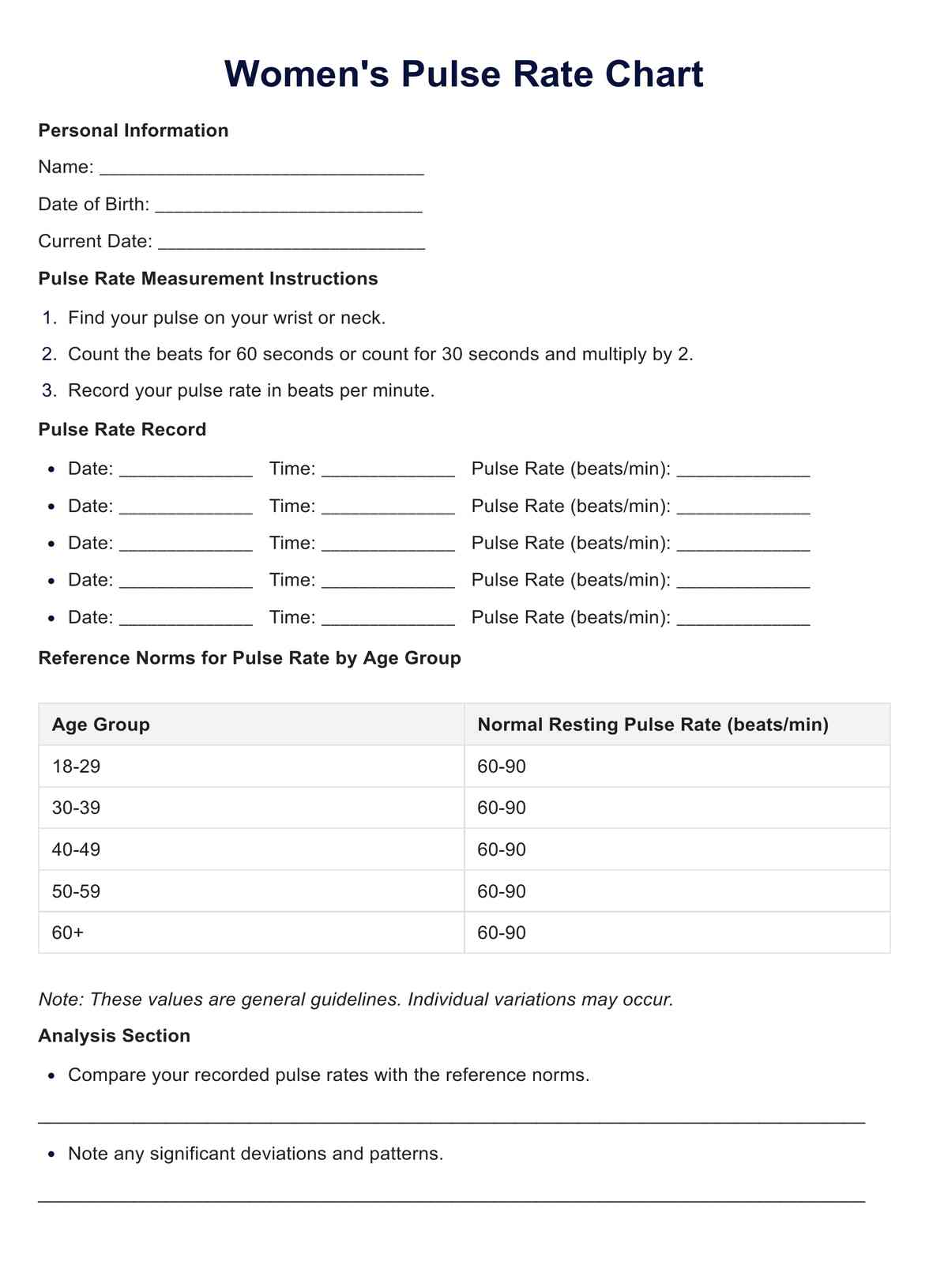Healthcare providers and women interested in monitoring their cardiac health often request this chart.

Discover your optimal heart health with our Women's Pulse Rate Chart, a reliable tool for tracking and understanding female heart rates effectively.
Healthcare providers and women interested in monitoring their cardiac health often request this chart.
Women's Pulse Rate Charts charts are used during medical check-ups, cardiac assessments, fitness evaluations, and personal health monitoring.
Women's Pulse Rate Charts charts are used to compare an individual's pulse rate against normative values to assess cardiac health.
EHR and practice management software
*No credit card required
Free
$0/usd
Unlimited clients
Telehealth
1GB of storage
Client portal text
Automated billing and online payments